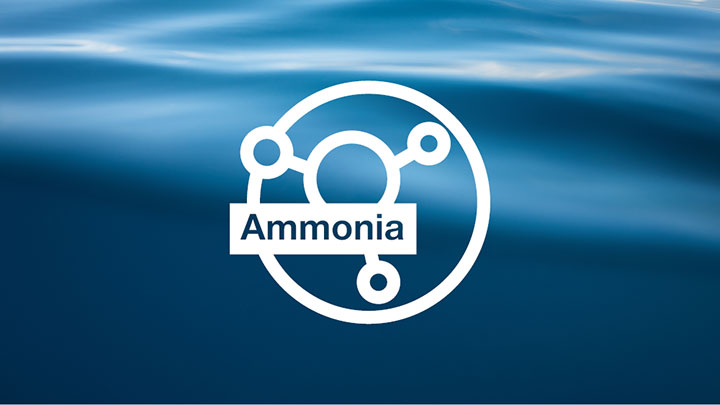The carbon-free fuel alternative of the future
A Greener Future for Shipping? Ammonia, like hydrogen and methanol, can be used both for energy storage and as clean fuel to power combustion engines. There are several projects for lager scale green ammonia production underway.
Why ammonia?
Ammonia is a compound of nitrogen and hydrogen with the formula NH3. Both in liquid form and as a colorless gas, it has a distinct pungent odor. Although common in nature and in wide use, ammonia is both caustic and hazardous in its concentrated form. It is one of the most widely produced chemicals and the basic material for the production of all other nitrogen compounds. The annual global industrial production of ammonia is 175 million tonnes, mostly processed into fertilizers.
How is ammonia produced?
Historically, commercial ammonia has been produced utilizing fossil fuels via the Haber-Bosch process from the elements hydrogen and nitrogen, and is not carbon-neutral. But advances in Power-to-X technologies have provided a net-zero solution; producing green hydrogen from renewables to process into other green fuels like methanol and ammonia. Likewise, green ammonia production will use nitrogen derived from air.
Ammonia as a green/sustainable fuel
Although it is often produced from fossil fuels, ammonia has the potential to be a truly sustainable fuel solution; it can be produced using nothing but air, water, and green energy. The major advantage of ammonia as a fuel is that its chemical composition, NH 3, contains no carbon and hence no CO2 is formed during its combustion in engines. Ammonia has an energy density of 12.7 MJ/L, which is considered high compared to other sustainable fuels, including hydrogen. Furthermore, it liquefies at only -33°C. In terms of its suitability as an engine fuel, NH3 is rather slow burning and as a result presently suited for two-stroke diesel combustion.
Ammonia can be stored and transported in relatively less challenging and energy consuming conditions because existing infrastructure & equipment can be used. Thanks to these characteristics, ammonia also offers a promising solution for export of sustainable green energy from remote locations with an abundance of wind, sun or geothermal energy, to more metropolitan areas.
Development of the world-first ammonia-powered two-stroke engine
A major advantage for ammonia as a fuel is that it is well established as a global commodity, mostly distributed by sea. The infrastructure is already in place in harbors and logistical hubs all over the world, together with well-established routines and safety regulations. Use of ammonia in ship engines may be a good way to demonstrate and further develop ammonia as a fuel.
Accordingly, MAN Energy Solutions plans to release its first commercial two-stroke ammonia-fueled engine for shipping by 2024; followed in 2025 by technology to retrofit engines in existing fleets to burn the new fuel.
2024 is a tough deadline, but we can meet it. The industry is already on board and working intensively with us towards greener maritime shipping.
Explore more
-

-

The case for two-stroke ammonia engines
Why newbuild and retrofit ammonia engines are key for the maritime energy transition.
MAN Energy Solutions is now Everllence.
We have adopted a new brand name and moved to a new domain: www.everllence.com. This page will also be relocated there shortly. We are working on shifting all pages to www.everllence.com.
